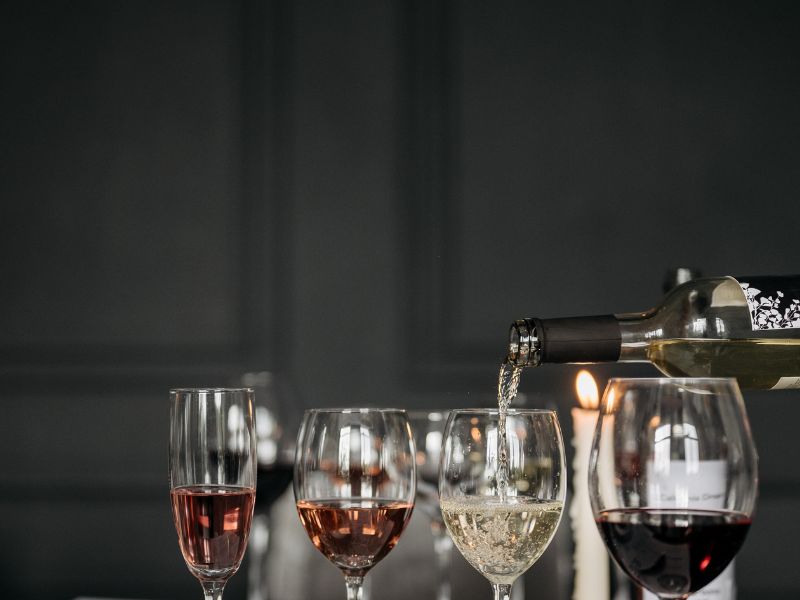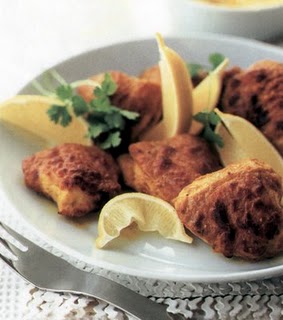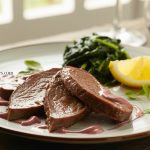Before we get to the answer let’s go over the differences between red and white wine.
The main distinction between white and red wine is the color of the grapes used in the wine-making process. White or red wine is produced depending on whether the grape juice is fermented with or without the grape skins.
Before fermentation, the skins, seeds, and stems are removed from pressed grapes to make white wine.
Red grapes, on the other hand, are crushed and then promptly poured into vats to begin the fermentation process for red wine. Many of the characteristic health ingredients found in red wine are derived from grape skins, which also give the beverage its pigment.
As a result of steeping with the grape skins, red wine is especially high in plant compounds like tannins and resveratrol that are found in the skins. Resveratrol is most recognized for being found in red wine. The “French Paradox,” which refers to the decreased incidence of cardiovascular disease among the French people despite their high intake of dietary fat, is thought to be responsible for the popularity of this substance. It was believed that their consumption of red wine contributed to this low prevalence.
Some of these beneficial plant chemicals are also present in white wine, though usually in considerably fewer quantities.
Pinot Gris, Syrah, Chardonnay, and Cabernet Sauvignon are just a few of the many diverse grape varieties that are utilized to make wine.
Red grapes are used to make red wine, although either red or white grapes can be used to make white wine. For instance, red Pinot Noir grapes are used to make classic French champagne.
Wine is produced in many nations. France, Italy, Spain, Chile, South Africa, Australia, and California and Long Island in the United States are a few of the major wine-growing countries.
While most locations cultivate a variety of grape varieties, some, like Napa Valley Chardonnay, Spain’s Tempranillo, and Argentina’s Malbec, are known for these famous varietals.
So which wine has the fewer amount of calories?
Red wines typically have more calories and alcohol than white wines do. Light reds contain between 120 and 165 calories per six-ounce glass according to LIWine.com. Light white wines have about 120 calories or fewer per glass. White wines with lower ABVs (alcohol by volume), such as Moscato, Chardonnay, and Sauvignon Blanc, have fewer calories than light white types like Riesling and Pinot Grigio.
Let’s go over some of the wine varieties and their calories
White wines with fewer calories
Riesling
A white riesling is typically a decent option for people who are watching their weight because each five-ounce serving has roughly 118 calories and five grams of carbohydrates. Choose a dry riesling if you can because they often have less sugar and hence fewer calories.
Chardonnay
A five-ounce glass of chardonnay has about 123 calories and three carbohydrates, making it a generally good choice if you’re looking for a low-calorie wine. Choose one that has undergone cold fermentation in stainless steel tanks if at all possible, as this results in a low-calorie variety of this grape.
Sauvignon blanc
Each five-ounce portion of Sauvignon blanc contains roughly 119 calories and five carbohydrates. It should come as no surprise that Sauvignon blanc is often dry and very acidic given that it is one of the healthier white wines.
Red wines with few calories
Pinot Noir
Given that each five-ounce portion of Pinot Noir has only 121 calories and four carbohydrates, it may be the greatest low-calorie red wine. Each 5-ounce glass of Pinot Noir wine contains around 1 g of residual sugar.
Cabernet Sauvignon
A cabernet sauvignon, which has just 122 calories and four carbohydrates, is very appealing. This red wine is a great low-calorie wine option because it is also relatively dry and has less sugar than most wines.
Merlot
Another excellent option is merlot, which has significant quantities of resveratrol and only 120 calories and four carbohydrates in a single five-ounce glass. Additionally, it has anti-inflammatory qualities that support your brain and stop cognitive deterioration. There is around 1 g of residual sugar in each 5-ounce pour of this wine.
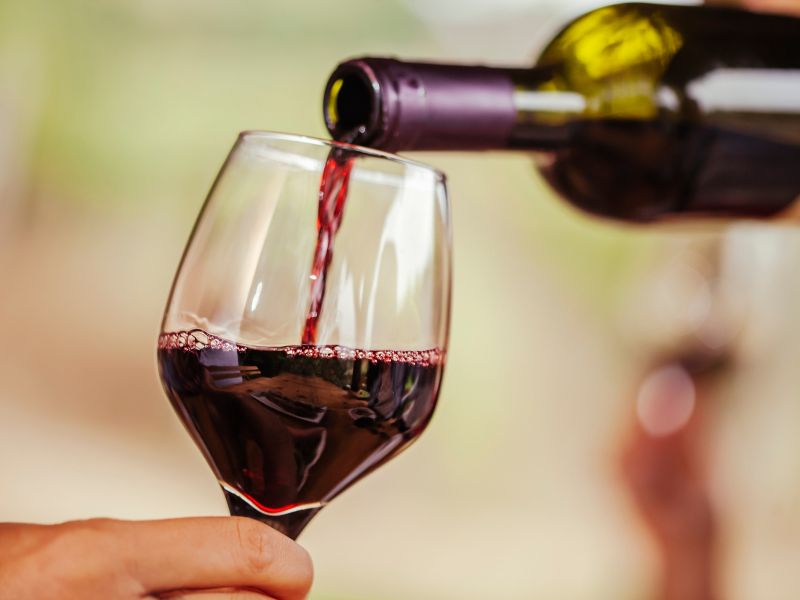
The following considerations should be made while selecting wine while on a diet
Red wines have more calories than white and rosé wines.
Avoid dessert wines like Port, Sauternes, and overly sweet Rieslings if you’re trying to cut calories.
Generally speaking, your wine will have more calories the greater the alcohol by volume (ABV) is. But because they could include more sugar, certain low-alcohol wines can actually contain calories. Before making a purchase, read the label.
Count out your pours. In this manner, you can monitor your wine consumption and calorie intake. Follow the conventional 5 oz pour to reap the rewards of wine without going overboard.
If you’re concerned about throwing out wine, buy half bottles or invest in a wine preservation system to keep your bottle fresh.
Despite numerous headlines claiming that “drinking two glasses of red wine before bed can help you lose weight,” this isn’t the best suggestion. Enjoy a glass of wine with dinner and give your body time to digest the food before going to bed.
Whenever possible, it’s wise to use moderation when having a glass of wine during the week.
The calories differ according to the wine. In order to determine calories, multiply the volume of alcohol by the number of ounces consumed, and then multiply that result by 1.6. You will need to use the formula: oz x ABV x 1.6 = total calories.
Stick to one to two glasses of wine at most, keep a healthy, balanced diet, and engage in lots of exercise to benefit from any potential weight-loss advantages of wine.
Choose a glass of wine instead of popping open a bottle of beer or drinking a fruity cocktail.
Wine, regardless of color, has fewer calories than beer or sugary cocktails if you enjoy the odd adult beverage. It also has the added advantage of antioxidants like resveratrol, which we discussed above.
Just be careful not to overdo it and put down a cheese plate every time you want to sip on your preferred Malbec.
© 2012-2022 by LiVentures. All rights reserved. No part of this document may be reproduced or transmitted in any form or by any means, electronic, mechanical, photocopying, recording, or otherwise, without prior written permission of LiVentures.
